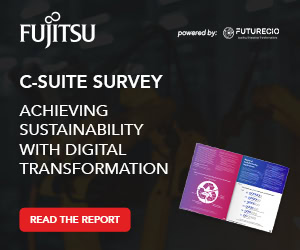Gartner says customer demand and buying behaviours continue to fluctuate unpredictably amid pandemic waves, supply chain disruption, inflationary price increases and geopolitical instability. At the same time, strategic marketing priorities — such as innovation, customer experience (CX) and digital commerce — transcend functional boundaries, becoming enterprise priorities with complex cross-functional execution.
Also, traditional sources of brand value are under pressure amid new forces, including disruptive market entrants, heightened audience expectations and the ease of digital learning about unfamiliar brands.
“As CMOs enter 2023, the current environment demands a relentless focus on customer value, purposeful evolution of the marketing function, and continual optimization of brand value,” said Ewan McIntyre, chief of research in the Gartner Marketing practice. “In order to meet the enterprise mandate of driving growth amid continued disruption, CMOs must act decisively to prioritise their investments and their strategy for the year ahead.”
Srinivas Gattamneni, chief executive officer with ADA, says marketing should be singularly focused on driving top-line growth for brands. He reckons this is what eventually every CEO, every CFO, measures or tries to measure and that's what the world is leading towards.
“Digital was meant to bring the promise of a better-focused marketing to commerce and hopefully we'll start to live up to its promise,” he continued.
Lacking among marketers in Asia
Gattamneni opined that marketing lags when it comes to keeping pace with the evolution of the consumer.
He argued that for the longest time, the focus for the marketeer was to build the brand, and distribution is handled separately.
“As consumers evolved onto digital platforms, marketers and distribution are trying to grapple with online commerce and digital marketing. These remain two big silos in most organisations, and I think that's the biggest thing that organisations are going through.” Srinivas Gattamneni
“And then there is a third frontier: how do the Chief of Commerce, the Chief of Marketing, and the Chief of Information in any company work together? That’s the biggest challenge,” he opined.
Working together
Gattamneni opined that the division of responsibility within the digital space of these three (titles) is very organisational-dependent.
“I think organisations are still evolving to fundamentally define who controls more. But just like most things, there will be standardisation of roles which is led by technology platforms.
“Very simplistically, what we believe is going to happen is the CIO will be responsible for the broader infrastructure of the full technology inside most companies. The CMO will be responsible for customer experience use cases and the Chief of eCommerce ultimately is responsible for bringing in revenue into the company,” he opined.
Top challenges for the CMO in 2023
In the current, in which organisations are trying to operate and preserve cash, and be resilient entering next year, Gattamneni predicts continued cutbacks around advertising spending.
He observed that during the pandemic, there is disproportionate energy was spent on digital platforms. Most marketers completely abandoned offline focus and completely moved to online.
Having built a whole new stack around online and digital, he posited that marketers are now grappling with how to integrate online efforts with offline. This, he explained, is where omnichannel kicks.
He also posited the third challenge is around investments in marketing technology, particularly accelerated over the last couple of years. “Marketers are trying to prove internally that these technology investments are delivering results,” he enumerated.
Focus on creating customer value
Gattamneni acknowledged that marketing has focused on outreach efforts – advertising on platforms. He said this has now evolved to where marketers are building customer experiences on top of platforms.
Customer experience is everything from somebody maybe seeing an ad, all the way to following through the full customer journey, to eventual interaction to purchase process and post-purchase as well.”
Predictions for 2023
Gattamneni predicts that 2023 will be the year of the Customer Data Platform (CDP), suggesting that in 2023, organisations will have a budget and focus on CDPs.
“Customer Data Platforms is the platform that will enable them to monetise all the different data that exists, to harmonise and give you a 360-degree view of the consumer,” he added.
He also expects a significant focus on measurement and attribution of every dollar that is spent both on advertising as well as marketing.
Finally, he predicts a greater emphasis on customer experience aimed at retention, upselling, and cross-sell. “Organisations will focus more on maximising their own customer base and hence, cross-sell, upsell and any technology and investments related to these will be paramount,” concluded Gattamneni.
Click on the PodChat player for more details on data trends for CMOs and CIOs in 2023, according to Gattamneni.
- What is the value of marketing today? As a practice, how has it evolved from the marketing practices of 2012?
- What do you see is lacking among marketers in Asia?
- What are the top 3 challenges marketers face as they modernise the practice in Asia?
- How do you see the CIO, CMO and Chief of e-commerce working together?
- Forrester and Gartner are of the opinion that marketing should put greater focus on creating customer value. How would you interpret this into action items for marketers?
- Coming into 2023, what are your top predictions for marketing and recommendations for marketers?
- Are marketing practices today sufficiently open and mature to drive this customer experience?
- What is the value proposition of ADA?




